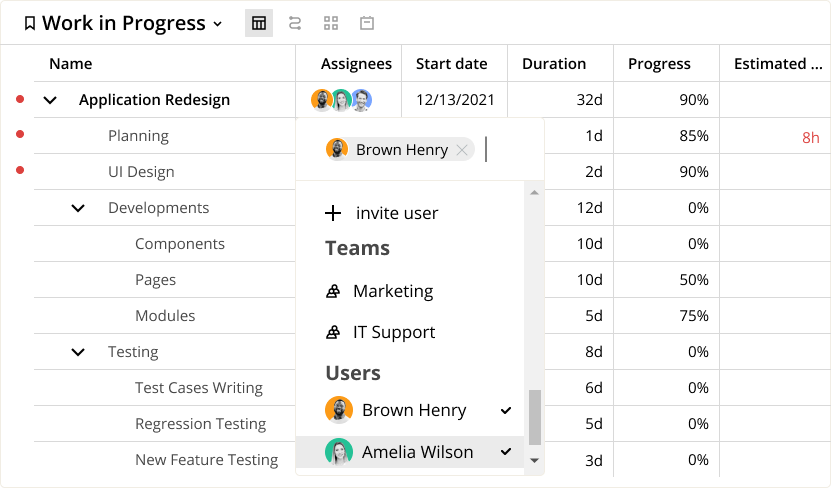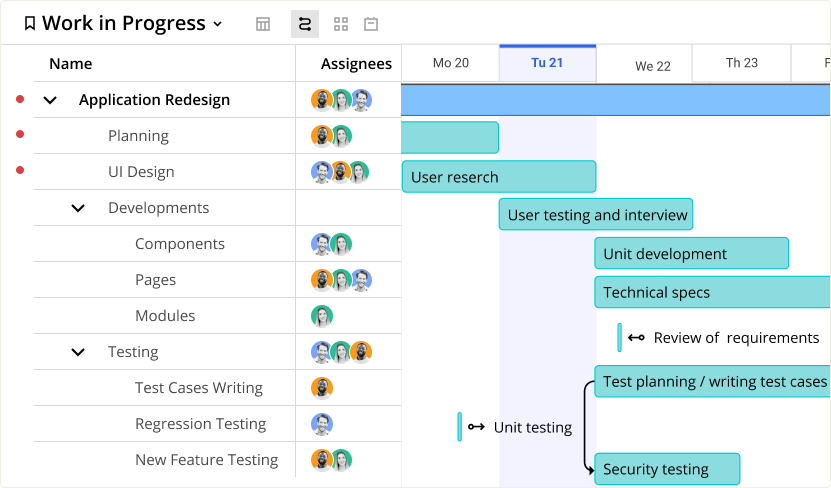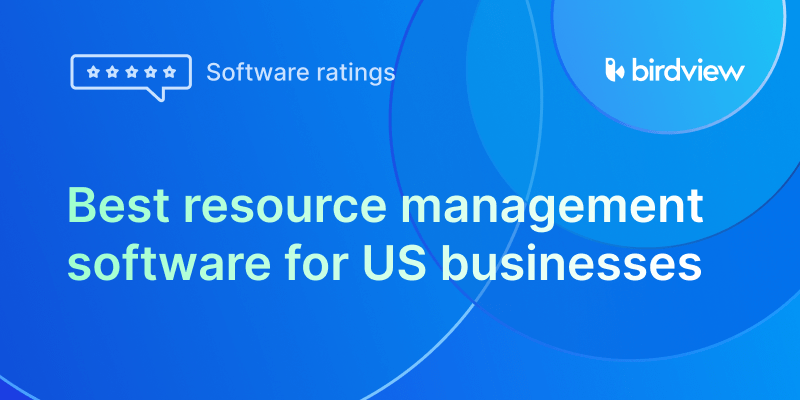Welcome to the magical land of project management, where every task is crucial, every deadline is sacred, and every resource is… well, usually overbooked. Resource smoothing is here to save the day. This guide will explain resource smoothing, why it’s beneficial, and how to implement it, all sprinkled with real-world examples.
Learn how resource smoothing balances resource usage by adjusting the schedule, ensuring efficiency while maintaining the project’s end date.
What is resource smoothing?
Resource smoothing is a technique used in project management to balance resource usage without overloading any team members and while keeping the project‘s end date intact. Imagine planning a detailed schedule for a construction project. Instead of having all the workers and equipment intensely busy one week and idle the next, resource smoothing involves spreading tasks evenly over time. This ensures that all resources are used efficiently, maintains a steady workflow, and avoids bottlenecks or downtime, leading to a more balanced and manageable project timeline.
Table of Contents:
What is resource smoothing?
Resource smoothing vs. resource leveling
Benefits of resource smoothing
The resource-smoothing process
Examples of resource smoothing
Project management software for resource smoothing
How to apply project management software for resource smoothing
How to do resource smoothing in Birdview PSA
Resource smoothing vs. resource leveling: what’s the difference
Resource smoothing and resource leveling are key techniques in project management, each addressing different constraints.
Resource smoothing meets project deadlines by adjusting the schedule to avoid resource demand spikes. The goal is to complete the work on time while maintaining steady resource usage. This often means delaying some non-critical tasks to balance the workload. While this leads to efficient resource use and cost savings, it reduces schedule flexibility for unexpected delays.
Resource leveling, on the other hand, prioritizes the availability of resources over time constraints. It answers, “With the resources we have, when can we finish?” This method involves adjusting the project timeline to fit within the available resources, which may extend the project’s duration. This approach ensures that resources are not over-allocated, but it can result in a longer project completion time.
Resource smoothing:
- Priority: Time constraints take priority.
- Goal: Complete the project by the required date while balancing resource demand to avoid peaks and troughs.
- Method: Adjust the schedule to delay non-critical tasks without extending the overall project duration.
- Outcome: More efficient and cost-effective use of resources, though with less flexibility to handle unexpected delays.
Resource Leveling:
- Priority: Resource availability takes priority.
- Goal: Determine when the project can be completed given the limited resources.
- Method: Adjust the project timeline to fit within the available resource limits, potentially extending the project duration.
- Outcome: Ensures resources are not over-allocated, but may delay project completion.
Combination:
Often, projects require a mix of both techniques to balance time constraints and resource limits, especially in complex programs and portfolios.
Benefits of resource smoothing
Stress Reduction: Resource smoothing distributes the workload evenly, ensuring no one is overwhelmed. Adjusting schedules and tasks to fit each team member’s capacity, helps maintain a manageable pace, reducing stress and burnout. This approach keeps the team calmer and fosters healthier work.
Increased efficiency: Resource smoothing eliminates the dreaded peaks and valleys in productivity by leveling out resource usage. Instead of having team members rush through tasks during peak times and sit idle during lulls, this method ensures a steady workflow. By aligning tasks with resource availability, everyone can maintain a consistent pace, much like a well-oiled machine. This continuous workflow enhances overall efficiency, as resources are used optimally, reducing downtime and improving project timelines.
Improved morale: A happy team is a productive team. When employees are not constantly overworked, they are more likely to stay motivated and engaged. Resource smoothing contributes to this by ensuring a balanced workload. Team members feel valued and appreciated when their capacities are respected, leading to higher job satisfaction. This positive environment encourages collaboration and innovation, as people are more willing to contribute their best efforts when they are not burnt out.
Better resource utilization: Resource smoothing ensures that all resources are used effectively. Instead of having some team members overwhelmed with tasks while others have nothing to do, this technique balances the workload. This optimal distribution means that all team members contribute just the right amount, avoiding both underutilization and overburdening.
Enhanced customer satisfaction: Timely project completion and high-quality deliverables are key to customer satisfaction. Resource smoothing helps achieve this by ensuring that projects stay on track and are delivered as promised. By avoiding delays caused by resource bottlenecks and ensuring that all tasks are completed efficiently, it enhances the overall quality of the project. Satisfied customers are more likely to return and recommend your services, leading to long-term business success.
Agile work environment: Resource smoothing promotes a more agile and responsive work culture. By regularly adjusting tasks and schedules to match resource availability, teams can adapt quickly to changes. An agile work environment encourages innovation and swift problem-solving, ensuring that teams can meet new challenges head-on without disruption.
By implementing resource smoothing, you create a balanced, efficient, and positive work environment that benefits not only your team but also your clients and the overall success of your projects.
Disadvantages of Resource Smoothing
Resource smoothing, while beneficial for balancing workloads, has its downsides. First, it reduces flexibility; maintaining a fixed end date limits the ability to adapt to unexpected changes. Second, it can increase stress as team members face tighter schedules, aiming to meet deadlines without additional buffer time. Third, less slack time means there is little room to maneuver if delays occur, potentially leading to bottlenecks. Lastly, continuous monitoring and adjustments add complexity to project management, requiring more oversight and detailed planning.
Drawbacks of resource smoothing in multi-projects
Resource smoothing in multi-project settings can lead to reduced flexibility and increased complexity. Aligning multiple projects to a fixed end date limits adaptability to changes or unexpected issues. This often results in higher stress levels for team members, as they face tighter schedules with less slack time. Continuous adjustments and meticulous coordination are required, making management more challenging and potentially causing bottlenecks and delays in critical tasks.
The resource-smoothing process
1. Identify the tasks: List all the tasks required for the project. This is your project to-do list but on steroids.
Example: If you’re planning a marketing campaign, tasks might include content creation, graphic design, social media scheduling, and performance analysis.
2. Determine resource availability: Know who is available and when. Think of this as creating a schedule for each of your jugglers.
Example: Alice can work 20 hours this week, Bob is available for 30, and Charlie is juggling another project but can spare 10 hours.
3. Allocate resources: Assign tasks to your available resources. Ensure no one is overwhelmed.
Example: Assign Alice to content creation for 15 hours and social media for 5. Bob takes on graphic design and performance analysis.
4. Adjust the schedule: Tweak the timeline to ensure tasks fit within the available hours without exceeding limits.
Example: If content creation takes longer than expected, extend the timeline slightly for social media tasks, ensuring Alice isn‘t overworked.
5. Monitor and adjust: Keep an eye on progress and make adjustments as needed. Think of it as fine-tuning your juggling act.
Example: If Bob finishes graphic design early, reassign him to assist with performance analysis or social media tasks.
With this balanced approach, nobody is overworked, deadlines are met, and the project sails smoothly.
Examples of resource smoothing
Resource smoothing ensures that tasks are scheduled according to resource availability, avoiding peaks and valleys in workload. Here are some practical examples:
Marketing agency:
Scenario: The content team is swamped with article writing while designers wait for drafts.
Solution: Schedule writing tasks early in the week and design tasks later, ensuring designers have steady work as content becomes available.
Scenario: Senior consultants have overlapping deadlines for client reports.
Solution: Adjust the schedule so that junior consultants assist with preliminary research, allowing seniors to focus on high-priority tasks without overloading.
Scenario: Developers are busy with coding tasks, but QA engineers are idle.
Solution: Schedule coding and testing phases sequentially, so QA engineers work right after developers finish a module, keeping everyone engaged and productive.
Event planning:
Scenario: The planning team has multiple events to organize, leading to uneven workloads.
Solution: Assign team members to different stages of event planning (e.g., initial contact, logistics, follow-up) and stagger these stages across different events to balance workloads.
Scenario: Engineers are overwhelmed with design reviews while construction staff are underutilized.
Solution: Schedule design reviews in phases, allowing engineers to complete tasks without rush. In the meantime, construction staff can prepare for the next phase, ensuring a smooth transition between design and execution.
Resource smoothing is the unsung hero of project management. It ensures your team works efficiently, avoids burnout, and stays happy. By following the steps outlined and applying them to your projects, you‘ll be juggling tasks like a pro–without the flames.
Read more:
Resource leveling (definitions, examples & how to apply)
Capacity Planning: The Ultimate Guide (2024)
Resource Planning and Scheduling in Project Management
Capacity Planning and Resource Planning: What is Different?
Project management software for resource smoothing
Project management software is essential for efficient resource allocation, helping to balance workload and meet project deadlines. Tools such as Birdview PSA, MS Project, Monday.com and others offer features that allow managers to visualize task dependencies, adjust schedules and allocate resources effectively.
Let’s use project management software Birdview PSA as an example.
How to do resource smoothing in Birdview PSA
Resource smoothing helps balance workloads without extending project timelines. Here‘s a detailed guide on how to apply resource smoothing using Birdview PSA:
Step 1: Identify Resource Peaks and Troughs
- Example: Analyze the project timeline to identify periods where certain team members are overbooked or underutilized.
- How: Use Birdview PSA‘s resource allocation view to get a visual representation of resource usage across the project timeline.

Step 2: Adjust Task Start and End Dates
- Example: Shift non-critical tasks within their available float period to balance the workload.
- How: Drag and drop tasks in Birdview PSA‘s Gantt chart to new dates, ensuring that critical path tasks remain unaffected.
Step 3: Break Down Large Tasks
- Example: Split a major task like “Create Marketing Strategy” into smaller tasks such as “Research Market Trends” and “Draft Marketing Plan.”
- How: Use Birdview PSA‘s task management feature to break down tasks and assign subtasks to different team members.
Step 4: Cross-Train Team Members
- Example: Train junior team members to handle specific tasks usually assigned to senior staff during peak periods.
- How: Schedule training sessions and create backup task assignments in Birdview PSA to ensure flexibility.
Step 5: Monitor and Adjust Regularly
- Example: Regularly review the project schedule and resource allocation to make necessary adjustments.
- How: Use Birdview PSA‘s real-time tracking and reporting features to monitor progress and adjust resources dynamically.
By following these detailed steps using Birdview PSA, you can effectively apply resource leveling in your projects, ensuring productivity, meeting deadlines, and achieving client satisfaction.
Simplify your resource planning process with Birdview
Birdview PSA simplifies resource smoothing by providing real-time insights into resource allocation. It helps adjust project schedules to ensure resources are used efficiently without overloading team members, all while maintaining the project’s end date.
While resource smoothing is effective, it can lead to tight schedules with less flexibility and downtime, making teams rush to meet deadlines.
Pre-planning projects using past data helps mitigate these issues by providing a clearer picture of needed resources and time.
Birdview PSA’s powerful features, such as soft and hard resource allocation, help manage this process. A hard allocation is fixed and consistent, while a soft allocation allows for adjustments as needed.
Read more:
What is Resource Management
Resource management in project management: process, tools, benefits & technique
What is Resource Utilization and Analysis?
Resource allocation in professional services





